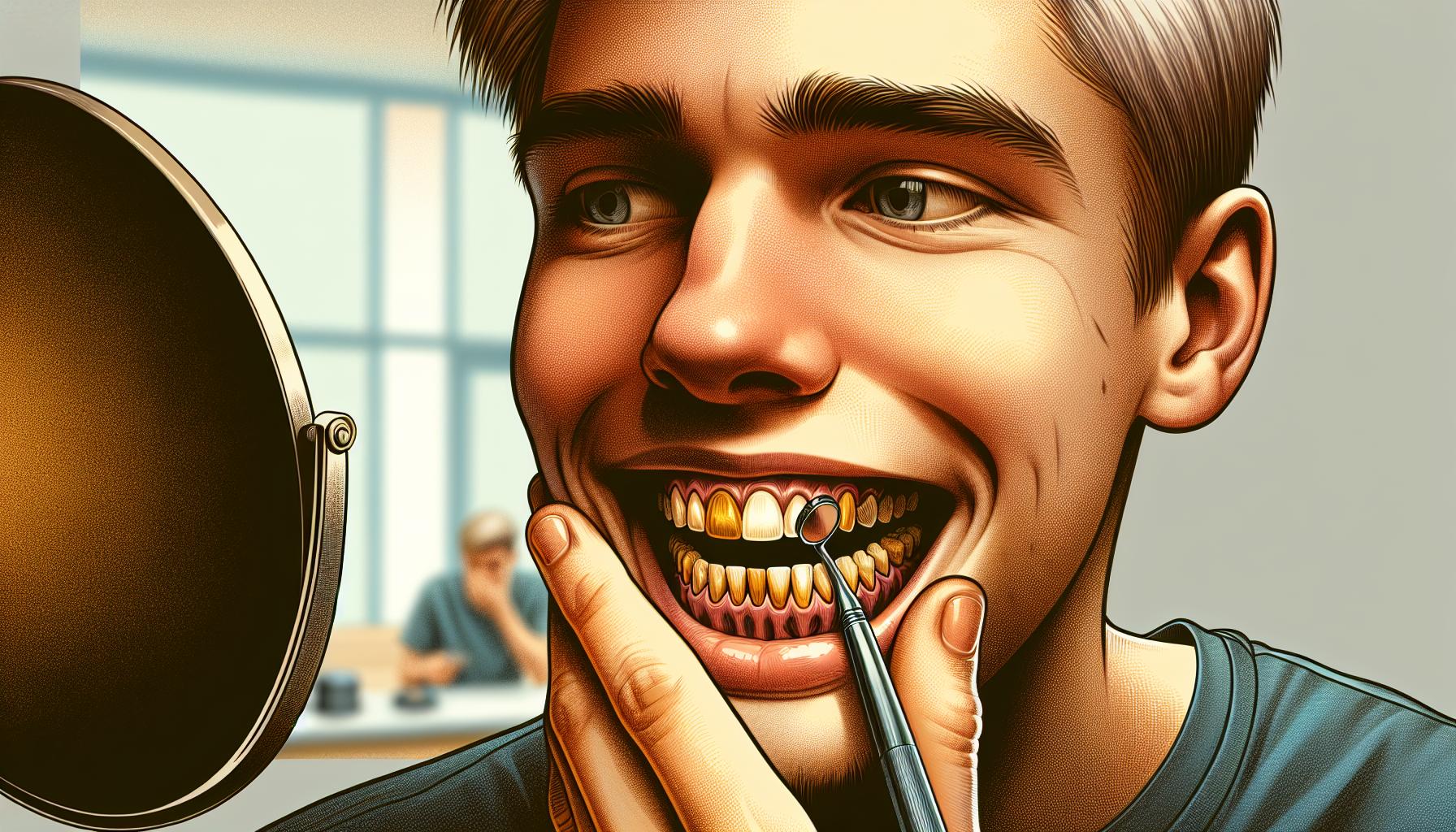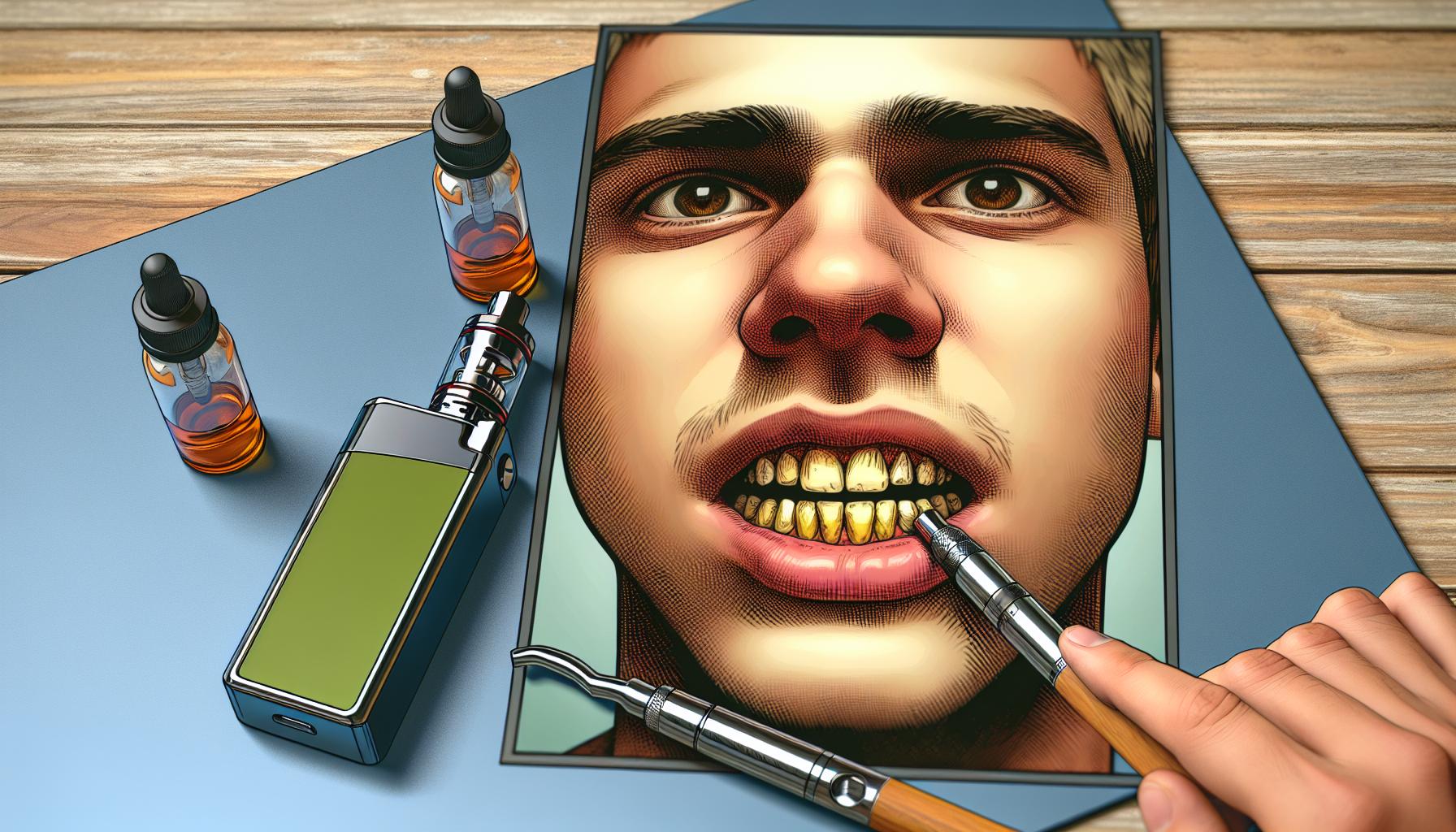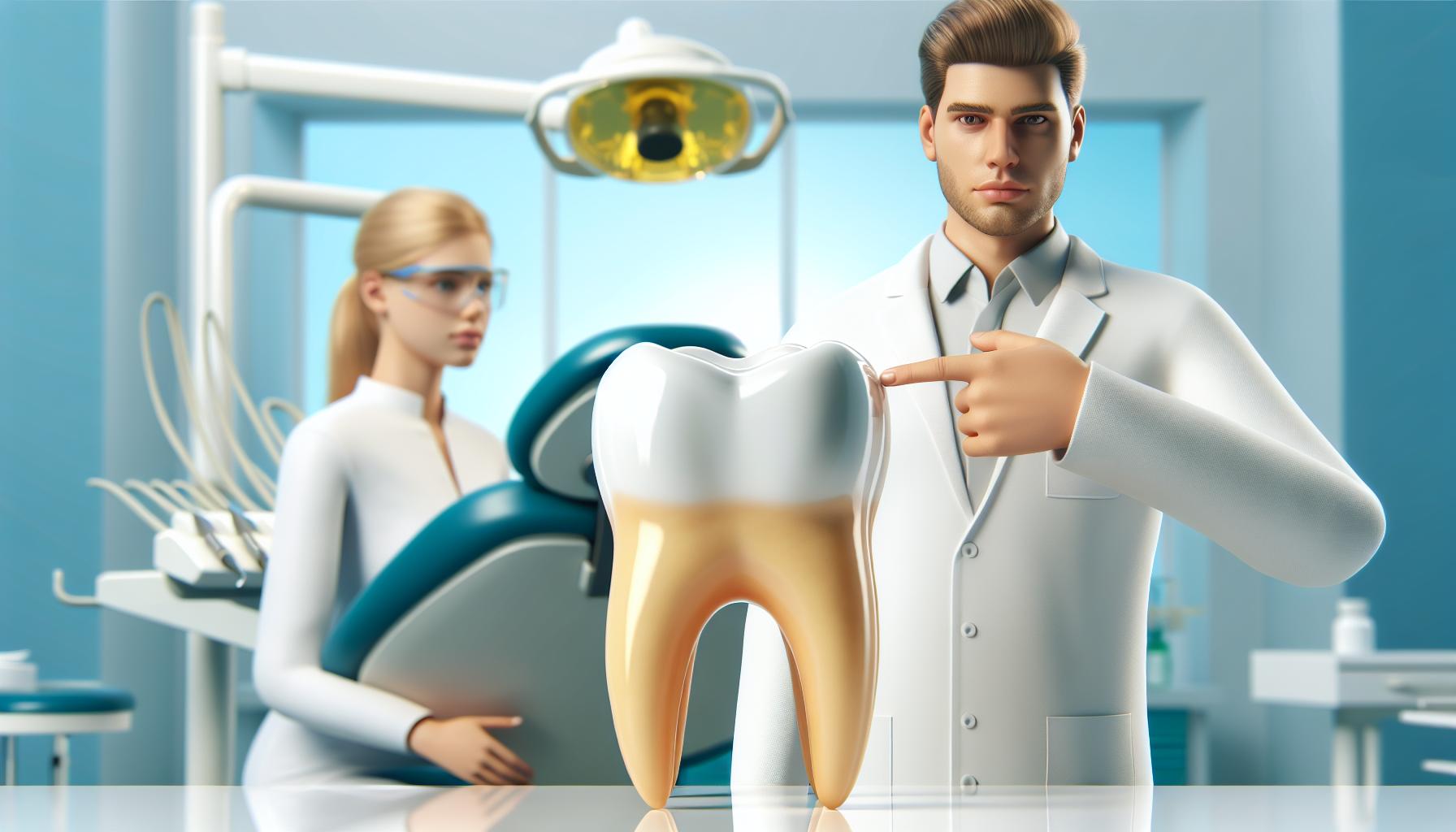Vaping’s popularity has skyrocketed over the years, often marketed as a cleaner alternative to smoking. But as someone who’s mindful of oral health, I can’t help but wonder—does vaping come with hidden consequences, like staining your teeth? After all, we all want a bright, confident smile, and any habit that might compromise that is worth scrutinizing.
While traditional cigarettes are notorious for causing yellow teeth, vaping seems to carry a sense of mystery. Many assume it’s harmless to your pearly whites, but is that really the case? Let’s dive into the connection between vaping and tooth discoloration to uncover the truth behind this growing concern.
Understanding Vaping And Its Effects On Oral Health
Vaping, regarded as a substitute for smoking, involves inhaling vaporized substances. Its potential effects on oral health, including teeth staining, have become a point of focus.
How Vaping Works
Vaping devices heat a liquid, often called vape juice or e-liquid, using a battery-powered coil. This heating creates an aerosol containing nicotine, flavorings, and other chemicals, which users inhale. Unlike traditional smoking that burns tobacco, vaping involves vaporization without combustion, reducing tar exposure but still delivering active compounds to the mouth. Prolonged exposure to the aerosol can impact teeth, gums, and saliva composition.
Common Ingredients In Vape Liquids
Vape liquids typically comprise nicotine, propylene glycol, vegetable glycerin, and flavorings.
- Nicotine: Stains teeth over time by binding to dental enamel surfaces.
- Propylene Glycol: Retains moisture but, when broken down, can dry the mouth, fostering bacterial growth.
- Vegetable Glycerin: Creates the vapor and, when combined with sweet flavorings, can coat teeth, enabling plaque accumulation.
- Flavorings: Contain chemicals that may erode enamel and impact oral health with frequent use.
Even though vaping avoids tar, these ingredients can still contribute to tooth discoloration and deteriorate dental health.
The Connection Between Vaping And Teeth Discoloration

Vaping, despite being marketed as a safer option, exposes teeth to certain chemicals that can lead to staining. Though it lacks tar found in cigarettes, the substances in e-liquids can still impact dental aesthetics over time.
Chemicals In Vaping That Can Stain Teeth
Nicotine, a common ingredient in many e-liquids, turns yellow when exposed to oxygen, which may lead to discoloration. Even vape juices labeled as “nicotine-free” can contribute to staining if pigments or dark-colored flavorings are present.
Propylene glycol, another ingredient, absorbs moisture and contributes to dry mouth, reducing saliva flow and compromising the natural cleaning process of teeth. Accumulation of plaque increases under these conditions, making stains more likely.
Vegetable glycerin, often mixed with flavoring agents, creates a sticky residue on teeth. This residue attracts bacteria and promotes enamel erosion, which exacerbates staining. Enhanced flavors like coffee, berry, or tobacco mimic commonly staining substances encountered in food or drinks.
How Vaping Differs From Smoking In Terms Of Staining
While smoking directly exposes teeth to tar, which causes rapid yellowing, vaping reduces this risk by eliminating combustion. However, the absence of tar doesn’t mean stains are avoided entirely.
Vape aerosol particles are smaller and may adhere less visibly initially, but they contain staining agents like nicotine and coloring agents. Long-term use can result in gradual discoloration, particularly with frequent exposure to dark or sugary flavors.
Unlike smoking, vaping can alter saliva composition differently due to propylene glycol and glycerin. Reduced saliva increases the risk of bacterial growth and plaque buildup. Though potentially slower in effect than smoking, the cumulative impact of vaping on teeth color shouldn’t be underestimated.
Other Oral Health Concerns Related To Vaping

Vaping affects more than just tooth color. Its impact extends to various aspects of oral health, often leading to complications over time.
Dry Mouth And Its Impact On Oral Hygiene
Dry mouth often results from vaping due to ingredients like propylene glycol, which absorbs moisture. A lack of saliva promotes bacterial growth and plaque formation, increasing the risk of tooth decay, bad breath, and gum disease. Reduced moisture also hinders the natural cleansing process, making it harder for the mouth to maintain a balanced pH, which can expedite enamel erosion. Over time, this condition exacerbates oral hygiene concerns, especially with prolonged use of vape products.
Gum Health And Vaping
Vaping poses significant risks to gum health, largely due to nicotine exposure. Nicotine restricts blood flow to the gums, reducing essential oxygen and nutrients. As a result, individuals may experience gum recession, inflammation, or even an increased likelihood of periodontal disease. Long-term vaping can also impair the body’s ability to heal oral wounds, making recovery from gum injuries slower. These factors collectively heighten the vulnerability of gums to damage and infections linked to vaping habits.
Preventing Teeth Discoloration From Vaping

Avoiding teeth discoloration while vaping requires proactive measures focused on oral hygiene and habit adjustments. Combining consistent dental care with practical alternatives can minimize staining effects.
Proper Dental Hygiene Practices
Maintaining a thorough dental care regimen reduces the likelihood of discoloration. Brushing twice a day with fluoride toothpaste helps remove surface stains caused by vaping. Using an electric toothbrush enhances stain removal by providing consistent pressure and thorough cleaning. Flossing daily removes plaque buildup between teeth, which can otherwise trap pigments from vape aerosols. Rinsing with an alcohol-free mouthwash protects enamel and eliminates residues left after vaping. Scheduling professional cleanings every six months ensures deeper stain removal and prevents dental issues linked to nicotine and flavoring exposure.
Alternatives To Reduce Teeth Staining
Replacing dark or strongly pigmented e-liquids with lighter-colored or unflavored options decreases the risk of noticeable discoloration. Using “low-nicotine” or “nicotine-free” vape juices minimizes yellowing since nicotine oxidizes and stains teeth. Increasing water intake during and after vaping clears away residue and prevents dry mouth, which exacerbates plaque accumulation. Chewing sugar-free gum containing xylitol stimulates saliva flow, neutralizing acids and reducing bacterial growth. Opting to vape less frequently or switching to non-inhalable nicotine alternatives, like lozenges, further reduces exposure to staining agents in vape aerosols.
Should You Be Concerned About Vaping And Yellow Teeth?

Vaping can contribute to yellow teeth and broader oral health risks. While it might appear less harmful than smoking, the effects on dental aesthetics and gum health are significant.
Long-Term Oral Health Risks
Frequent vaping affects teeth and gums over time. Chemicals like nicotine and propylene glycol reduce saliva, leading to plaque buildup and bacterial growth. This can cause tooth discoloration, bad breath, and cavities. Long-term exposure to sticky residues from vegetable glycerin also promotes enamel erosion, weakening the teeth and increasing sensitivity. Gum health suffers as nicotine limits blood flow, causing inflammation, recession, and a higher risk of periodontal disease. Prolonged use diminishes the ability to heal oral tissues, compounding damage over years of vaping.
When To Consult A Dentist
Regular dental checkups are essential for addressing vaping-related stains and oral issues. Consultation becomes critical if discoloration worsens, sensitivity increases, or signs of gum disease like bleeding or swelling occur. Dentists can provide treatments like professional cleaning, fluoride applications, or whitening procedures to combat vape-related damage. Early intervention ensures vaping habits don’t lead to irreversible oral health problems.
Conclusion
Vaping might seem like a safer choice compared to smoking, but its impact on oral health shouldn’t be overlooked. From tooth discoloration to gum issues, the effects of vaping can build up over time, especially with frequent use. While it lacks tar, the chemicals in vape juice can still harm your teeth and gums in subtle yet significant ways.
Maintaining a strong oral hygiene routine and making mindful choices about vaping habits can help minimize these risks. Regular dental visits are essential to catch and address any issues early. Your smile is worth protecting, so staying proactive about your oral health is always the best approach.
Frequently Asked Questions
1. Does vaping stain teeth?
Yes, vaping can stain teeth. Ingredients in vape liquids, such as nicotine, pigments, and dark flavorings, contribute to discoloration. Even in nicotine-free vapes, vegetable glycerin and flavorings can leave residues that attract bacteria, causing gradual staining over time.
2. Is vaping safer for your teeth than smoking?
While vaping is less harmful than smoking due to the absence of tar, it still poses risks to oral health, including tooth discoloration, dry mouth, plaque buildup, and gum issues. It may be less damaging overall but is not completely harmless to dental health.
3. What causes teeth discoloration from vaping?
Discoloration occurs due to nicotine turning yellow when exposed to oxygen, as well as pigments and dark flavors in vape juices. Additionally, dry mouth and residues from vegetable glycerin and flavorings can increase plaque and staining.
4. Can nicotine-free vape juices stain teeth?
Yes, nicotine-free vape juices can still cause staining. Dark flavors and pigments in the liquid, along with sticky residues from vegetable glycerin, can lead to tooth discoloration despite the absence of nicotine.
5. How does vaping affect your gums?
Vaping can harm gums due to nicotine reducing blood flow, leading to gum recession, inflammation, and a higher risk of gum disease. It may also impair the body’s ability to heal gum tissue over time.
6. Does dry mouth from vaping affect oral health?
Yes, vaping can cause dry mouth due to ingredients like propylene glycol, reducing saliva flow. This promotes bacterial growth, plaque accumulation, bad breath, and increases the risk of tooth decay and gum issues.
7. How can I prevent teeth discoloration from vaping?
To prevent discoloration, maintain proper oral hygiene. Brush with fluoride toothpaste, floss, rinse with mouthwash, and opt for low-nicotine or lighter-colored e-liquids. Drinking water, chewing sugar-free gum, and vaping less frequently can also help.
8. Can a dentist remove vape-related stains?
Yes, a dentist can address vape-related discoloration through professional cleaning, whitening treatments, and fluoride applications. Regular dental visits are essential for managing stains and preventing long-term oral health issues.
9. Are there alternatives to vaping to protect oral health?
Yes, consider non-inhalable nicotine options like patches or lozenges to reduce oral health risks. Quitting vaping entirely is the best way to protect teeth and gums from potential damage.
10. Can vaping lead to cavities?
Yes, vaping can increase the risk of cavities. Sticky residues from vape liquids promote bacterial growth and plaque accumulation, which can erode enamel and lead to tooth decay over time.
